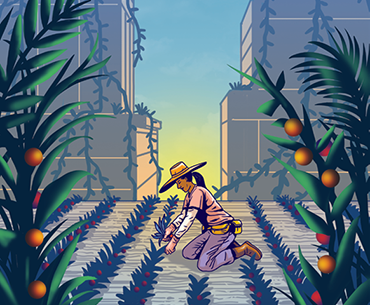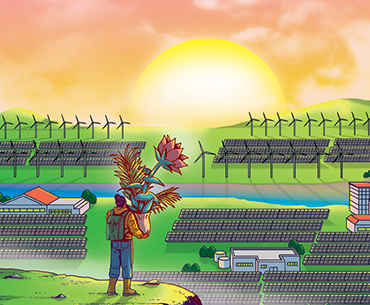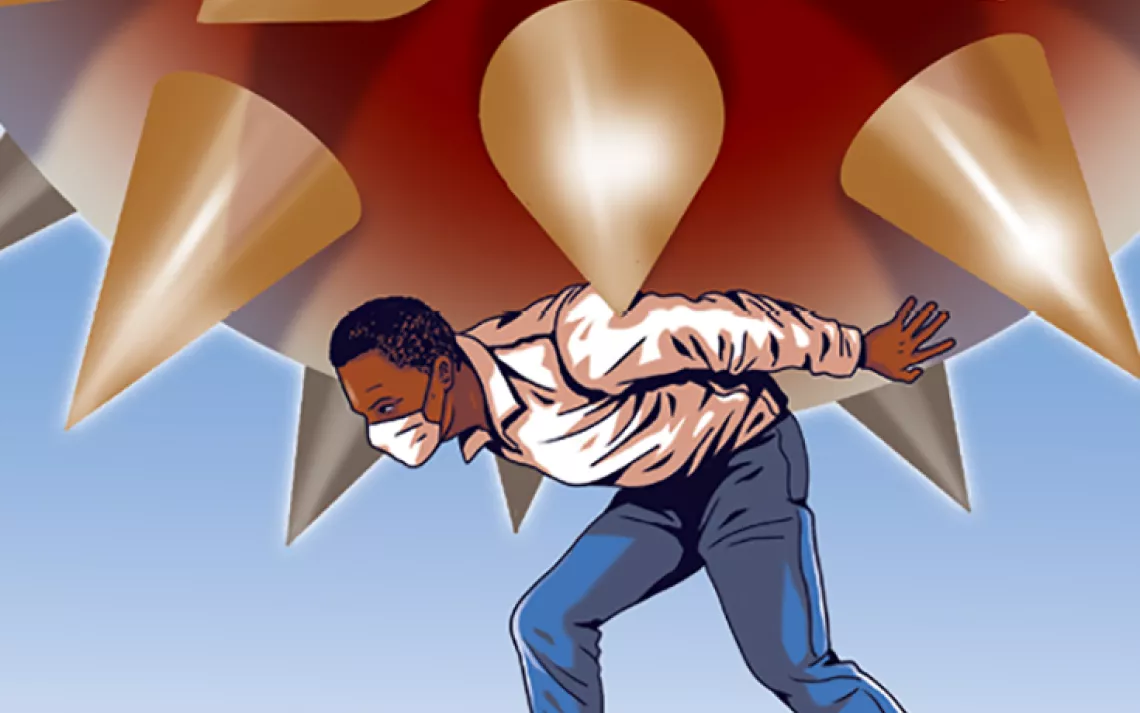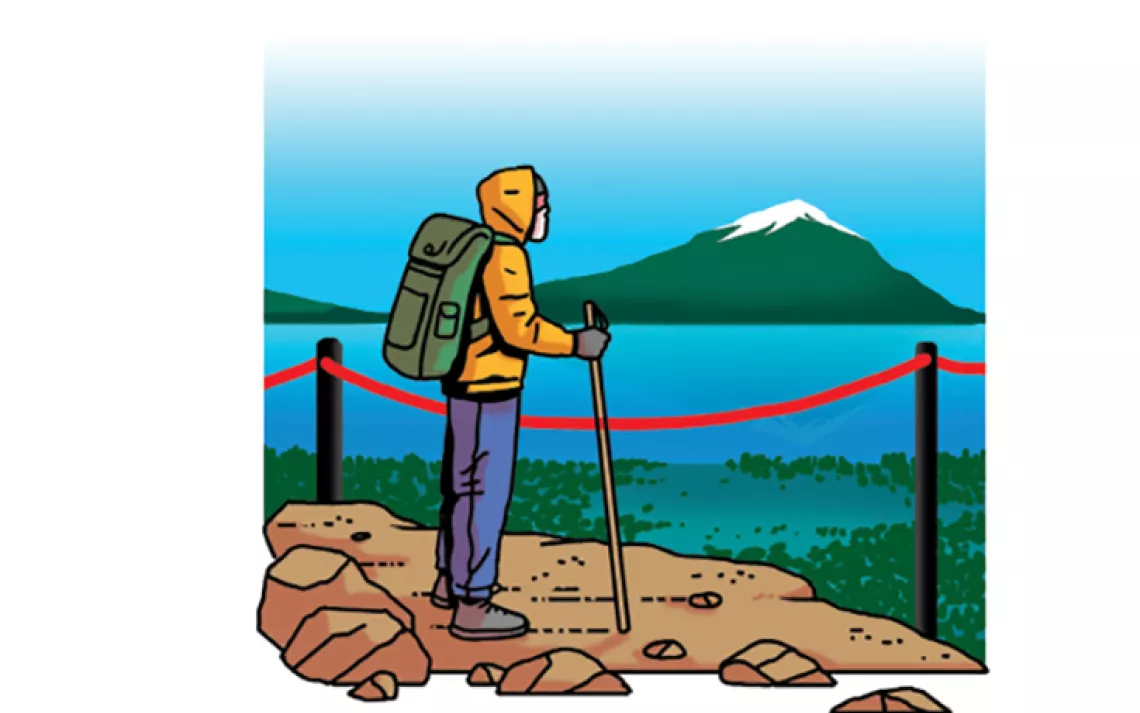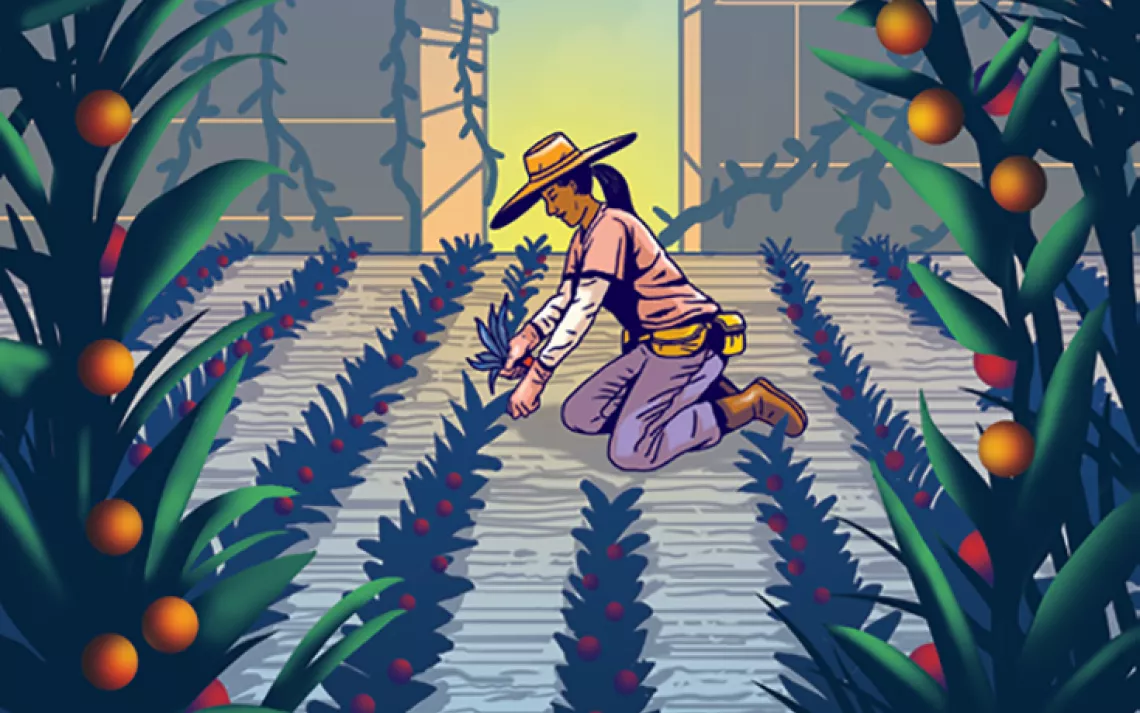Kristen E. Jeffers on Building Resilience
We already have the tools to create a more sustainable built environment
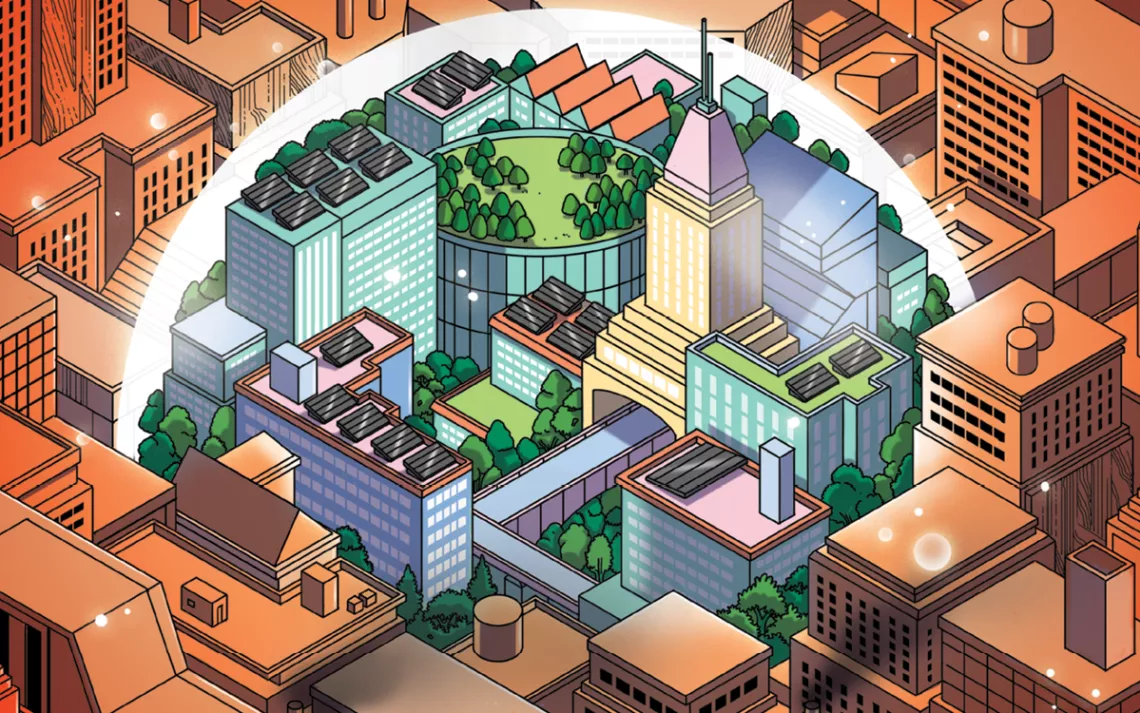
Illustration by Glenn Harvey
Despite what some people say about "the end of humanity," there will be people in the future. Those people will congregate and build shelters and make laws and decisions. But the way they do these things will be different.
I grew up in Guilford County, North Carolina, home of Greensboro and High Point, where I saw firsthand what it's like to have to rebuild. In the late 1990s, the textile and furniture companies that made it possible to go right from high school into a factory job moved overseas. But in the wake of the crash, other businesses emerged, from small-scale manufacturers to "slow fashion" operations.
After the pandemic hit, international supply chains were strained. Local manufacturing went from environmentally virtuous to essential, and surviving textile businesses saw a surge in demand from mask makers. Across the country, small manufacturers in cities like Baltimore, Detroit, and Minneapolis reconfigured to make hand sanitizer, hospital gowns, face shields, and ventilator parts.
COVID-19 hit the pause button on business as usual and revealed how quickly cities can change to respond to a crisis. Neighbors laid the groundwork for a more collaborative future by forming mutual-aid groups, procuring necessities, setting up free fridges, and forming pods of volunteers to get groceries to people who couldn't shop for themselves. Even before the pandemic, Black churches in Baltimore had been growing food on excess property near their sanctuaries while also working with Black farmers in the mid-Atlantic region to deliver produce directly to their parishioners.
Nature offers signs that show us where it's most safe to harbor, shelter, and grow. We have ignored those calls, with grave consequences. We are living through a global pandemic tied to our shortsightedness even as we endure record-breaking hurricanes and heat waves and wildfires. We can no longer build in ways that tax our natural resources and our own human health and well-being. When we insist on building businesses and housing on prime farmland, or making barrier islands into luxury resorts, or placing new suburbs in the path of floods or wildfires, or building where there isn't enough water, we are perpetuating oppressive systems that keep us from a sustainable lifestyle.
We have the tools to create a more sustainable built environment. In a future where climate disruption is taken seriously, it won't be an option to build without using those tools. New construction won't begin without considering transit access, wildfire and flood risk, and where the water will come from. Research already shows that the majority of Americans support banning new construction in disaster-prone areas.
Rooftop solar, geothermal heating, proper insulation, energy efficiency? In a world that takes the future seriously, these will all be mandatory. States like California, Massachusetts, and Oregon have already retooled their building codes to set new, higher standards for energy efficiency. When the US Department of Energy made federal funding for the 2009 Recovery Act contingent on developing stricter building codes, several other states also rewrote theirs to higher standards. FEMA now requires states and municipalities that ask for disaster aid to rebuild public facilities to higher standards and (in some cases) to relocate to safer locations.
Building to this level of quality is expensive in the short term, but by being more flexible, buildings can be more affordable to commercial tenants and residents. We may still have big stores, but our future cities' retail can be small and pop-up, to lower the barriers to entry for small entrepreneurs. This is already happening in the food industry, where food halls—which are common in many other countries—are having a resurgence. Those small, local businesses can be located anywhere from farmers' markets to Main Street storefronts to rejuvenated mid-century shopping malls and strip malls—with space for the operations to expand and contract without bankrupting themselves.
The small businesses that can rebuild local economies are vulnerable to predatory lenders because, especially since the 2007–09 financial crisis, they're often denied conventional loans by banks that see more profit in doing business with larger clients. Tools already exist to change this too. Land trusts are used to maintain local farms, affordable housing, and other forms of land use that benefit a community but don't make a whole lot of money. They can also provide space and buildings for anchors such as grocery stores, medical centers, and local banks. Community wealth cooperatives, which loan money in ways that are meant to protect the recipient of a loan as well as the lender, are already helping businesses start, scale up, and keep money in their neighborhoods.
Many of the zoning laws in cities and counties across the United States were created to enforce segregation. Reversing those codes will make cities and suburbs more livable for everyone. Housing will be more flexible. Apartments, townhomes, duplexes, and accessory dwelling units will make housing more affordable, because building more, smaller, flexible units will create more stock and drive down prices. More flexible zoning will allow us to add an extra family member to our home, give us space to start a new venture, or just let us rest more often, since we won't be maintaining more space than we actually need. Some buildings will be made to last, but others will be lightweight, temporary, and mobile. They will be able to provide shelter during the crises brought on by climate change.
In many cities, building codes mandate a certain number of parking spaces for new developments, even as younger generations are buying fewer cars than past generations did. These parking minimums unnecessarily inflate building costs; eliminating them will make housing and commercial real estate less expensive and open up space for new construction. Parking lots and gas stations of old will transform into solar installations, loading zones for delivery vehicles, charging ports for our all-electric cars and bikes, and mechanical spaces to service those vehicles. With fewer cars on the road, sidewalks and bike lanes will expand, and the vehicle lanes that remain will provide more rail and bus transit service.
We already have the technology and the ability to build this future. What we don't have yet is the education needed to create and maintain our visions. Often, the city planning department is the place where graft and patronage have settled in—where developers can pressure local governments to keep building standards low. Power goes to those who have the most money, and the process under which a new building or a redevelopment plan or legislation and rule changes are proposed and approved is difficult for outsiders to learn. City planning is underreported by many local news organizations. But civic programs that educate people in local government, like Greensboro's City Academy and Leadership Greensboro, can give adults the skills to understand their own governments, learn how to fight against injustice, and elect city officials who will plan well and be accountable to their own communities.
This article appeared in the January/February edition with the headline "Retooling Our Cities."
 The Magazine of The Sierra Club
The Magazine of The Sierra Club

